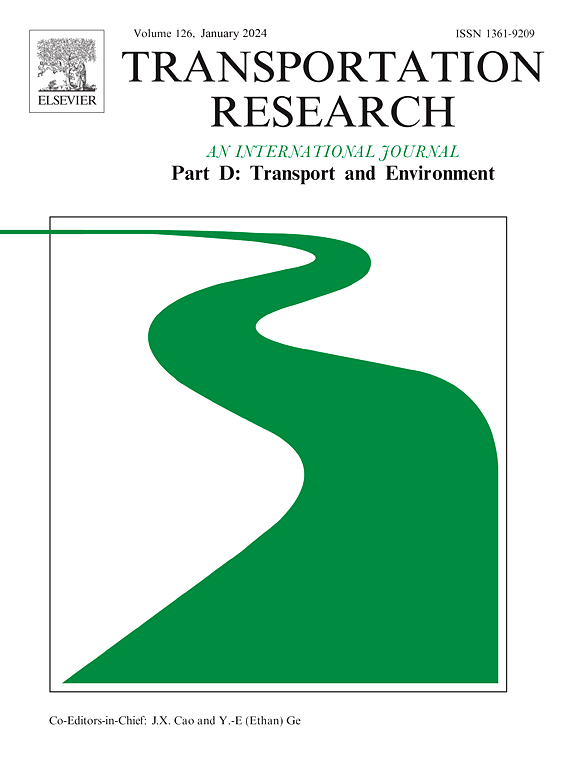Evaluating the impact of air corridors on the environment and public interests
IF 7.3
1区 工程技术
Q1 ENVIRONMENTAL STUDIES
Transportation Research Part D-transport and Environment
Pub Date : 2025-04-09
DOI:10.1016/j.trd.2025.104732
引用次数: 0
Abstract
As a typical paradigm of unmanned aircraft system traffic management (UTM), air corridors are vital for ensuring the operation of logistics unmanned aerial vehicles (UAVs) in urban low-altitude airspace. However, the impact of air corridors on the environment and public interests remains underexplored. Therefore, this study incorporates concepts such as carbon emission costs, economic costs, and public interest considerations into the air corridor structural optimization model, while introducing geofencing constraints. The model attempts to minimize the impact of air corridors on public interests, including explicit calculation of ground risk and noise pollution. Additionally, a heuristic framework is developed to address the proposed formulaic model. Finally, this study evaluated the influence of key parameters on the geometric structure design of air corridors. The results show the impact of the height and step size of air corridors on carbon emissions, ground risk, noise emissions, and economic metrics.
求助全文
约1分钟内获得全文
求助全文
来源期刊
CiteScore
14.40
自引率
9.20%
发文量
314
审稿时长
39 days
期刊介绍:
Transportation Research Part D: Transport and Environment focuses on original research exploring the environmental impacts of transportation, policy responses to these impacts, and their implications for transportation system design, planning, and management. The journal comprehensively covers the interaction between transportation and the environment, ranging from local effects on specific geographical areas to global implications such as natural resource depletion and atmospheric pollution.
We welcome research papers across all transportation modes, including maritime, air, and land transportation, assessing their environmental impacts broadly. Papers addressing both mobile aspects and transportation infrastructure are considered. The journal prioritizes empirical findings and policy responses of regulatory, planning, technical, or fiscal nature. Articles are policy-driven, accessible, and applicable to readers from diverse disciplines, emphasizing relevance and practicality. We encourage interdisciplinary submissions and welcome contributions from economically developing and advanced countries alike, reflecting our international orientation.

 求助内容:
求助内容: 应助结果提醒方式:
应助结果提醒方式:


